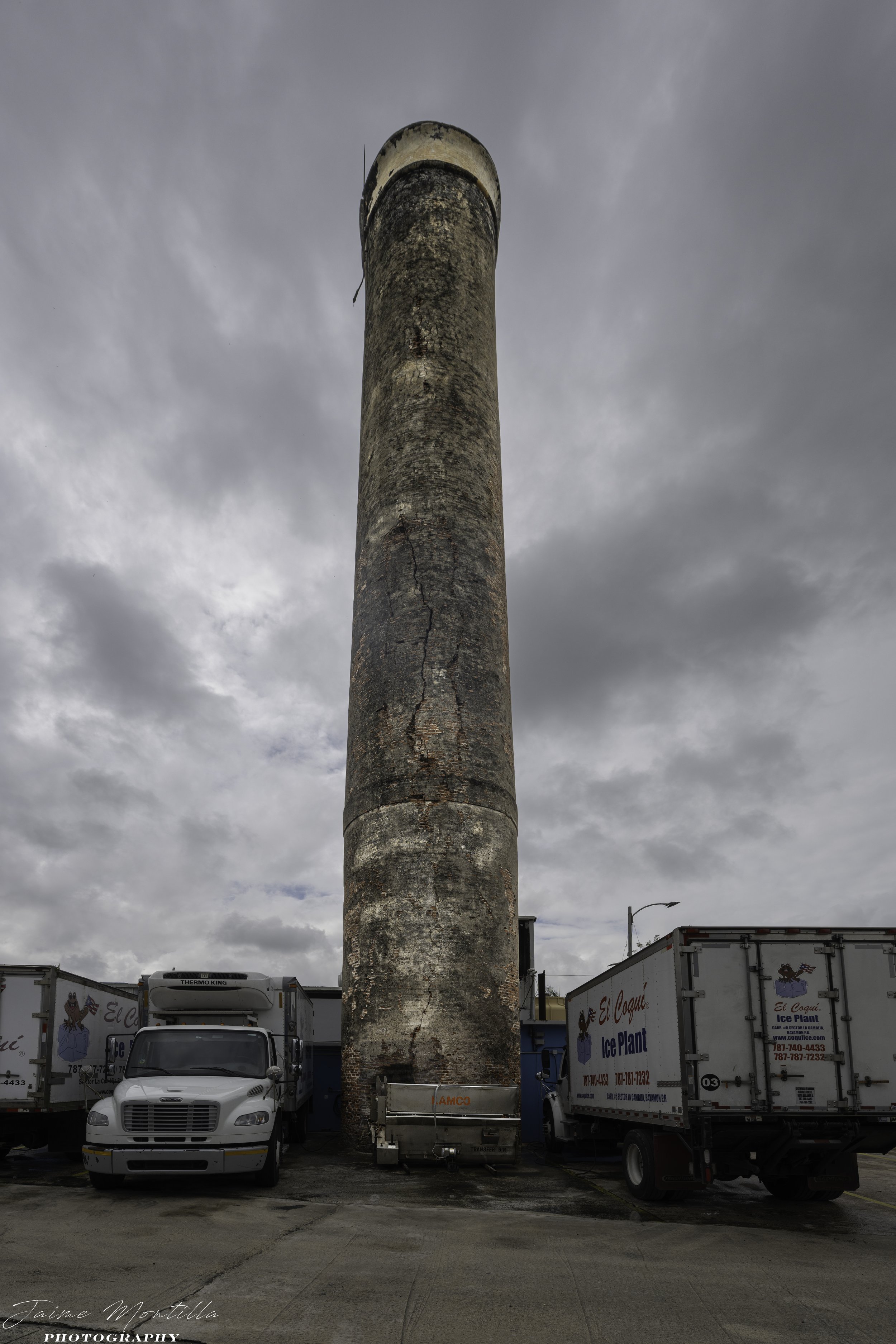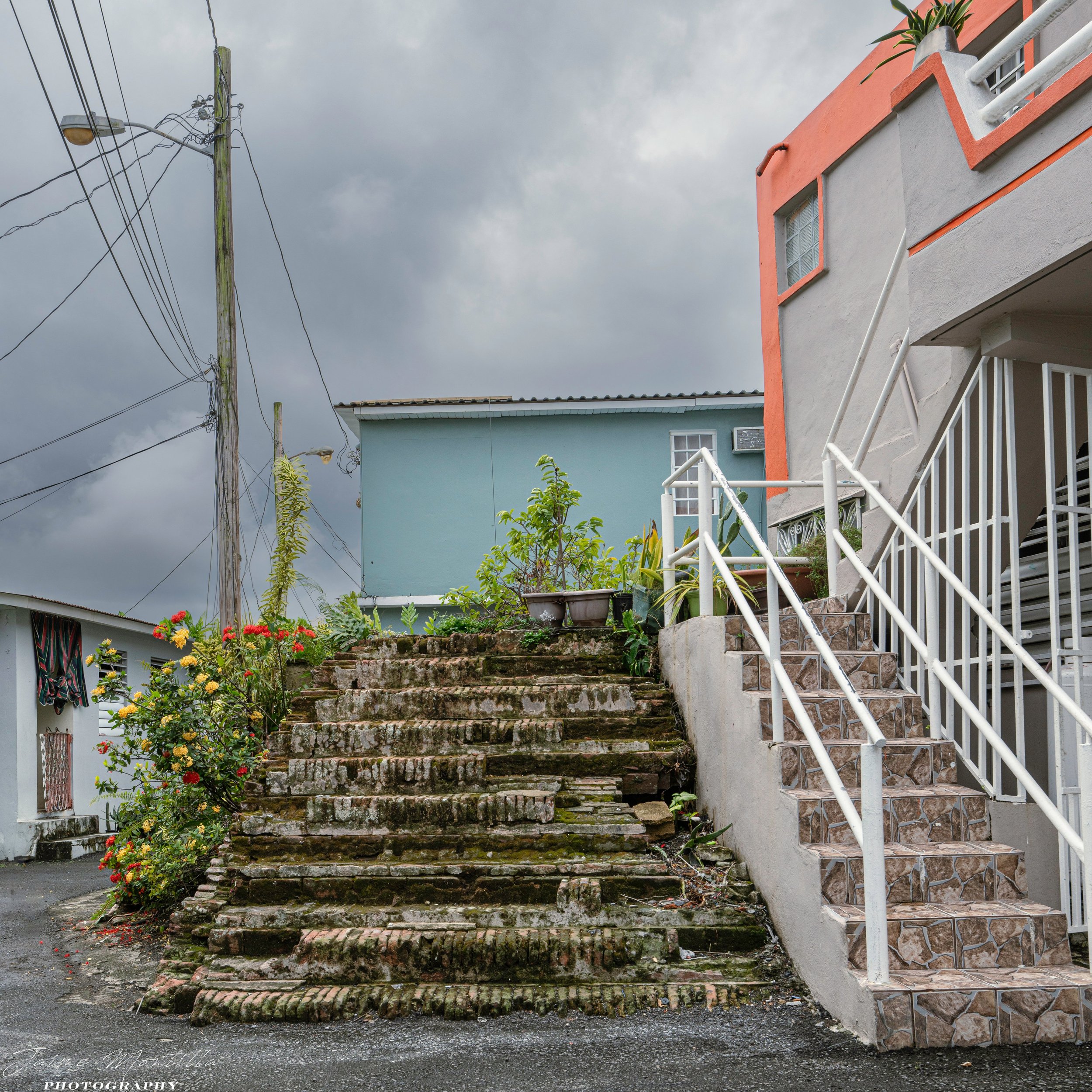
Central Union
Location: Bayamón
Date Established: 1894
Date Ceased Operations: ca. 1910
Annual Production Graph: N/A
Average Annual Production: N/A
Best Production Year: N/A
Family Ownership: Masson
It is evident that the names of the previous owners of Hacienda Santa Bárbara on this location map dated in 1828 were crossed over and its owner in 1828 was identified as Sidney Mason. It is also reported Mason was part owner of Hacienda Santa Bárbara with Juan Hopp, an Irish immigrant who had received his letter of naturalization in 1822. The names of the previous owners appear to be Juan or José Vizcarrondo and a person with last name Umpierre. The first Juan Vizcarrondo found in genealogy records is Juan de Vizcarrondo Ortiz de Zarate born in 1812 to Spanish Army Colonel Andrés Cayetano Vizcarrondo Martinez de Andino (1774-1840) and Josefa Maria Ramona Ortiz de Zarate, so it is unlikely it was Juan due to his age of only sixteen in 1828. Ownership by his brother José Bonifacio de Vizcarrondo Ortiz de Zarate (1800-1883) is more likely.
In her book Eighteenth-Century Reforms in the Caribbean, Altagracia Ortiz states that in 1770 then Governor of Puerto Rico Miguel Muesas commissioned Andrés Vizcarrondo to inspect the "Milicias Disciplinadas" all around the island to note methods used to prevent contraband. The author does not state who this Andrés Vizcarrondo was but it probably was Spanish Army Colonel Andres de Vizcarrondo Manzi (1729- ) who in Puerto Rico married Ana Martinez de Andino Ferrer and were the parents of Andrés Cayetano Vizcarrondo Martinez de Andino. It is possible though just a theory, that the beginning of Hacienda Santa Barbara was on land granted Andres Vizcarrondo by the Spanish Crown in payment for his services, as was the case with Fernando Fernandez of the adjacent Hacienda Santa Ana.
José Bonifacio de Vizcarrondo Ortiz de Zarate was married to Josefa Coronado Martinez de Andino and were the parents of noted Puerto Rican abolitionist Julio Vizcarrondo Coronado (1829-1889) whose biography states he was the son of wealthy plantation owners in Puerto Rico which suggests José Bonifacio's ownership of a hacienda though not necessarily Hacienda Santa Barbara. There were several plantation owners in the Carolina area with last name named Vizcarrondo, but the first ones identified in the Carolina area are José Bonifacio's brothers Salvador (1804- ) and Lorenzo (1808-1896) Vizcarrondo Ortiz de Zarate. Lorenzo was born at Hacienda Carmen in Barrio Hoyo Mulas which implies his father Andrés Cayetano Vizcarrondo Martinez de Andino was its owner at the time of his birth in 1808. It is reported that in 1836 Lorenzo had been a plantation owner in Carolina for twelve years and was the fourth richest in the jurisdiction of San Miguel de Trujillo Bajo. Hacienda Carmen was later re-named Hacienda Carolina.
Sidney Mason (1799-1871) was an American immigrant from Gloucester, MA who was employed at the Boston firm Wheeler & Gay in 1820 when he came to the West Indies as a Supercargo , he returned months later and settled in San Juan. In 1823 at the Church of Nuestra Señora del Pilar in Rio Piedras, he married Maria Benita (Mariquita) Dorado Serrano (1802-1935), sister of Clemencia Dorado Serrano the wife of José Ramón Fernandez, of which marriage two children were born, Catalina Julia (1824-1905) and Sidney Alphonso (1829-1839). In 1828 Sidney received his naturalization papers and from 1829 to 1835 was the first United Sates Consul in San Juan. Edward Bliss Emerson( 1805-1834), brother of Ralph Waldo Emerson worked with Mason in the consulate from 1830 until his death in 1834, in 1833 when Sidney took a six-month leave to visit the United States, he left Edward as his deputy for consular affairs. In 1835 Sidney and family returned to live in Gloucester where Mariquita died that same year. Although in 1837 Sidney was involved in the failed attempt of the London based Colonial Bank to establish the first banking institution in Puerto Rico, after 1835 he never returned to the island. His son Sidney Alphonse died young in 1841 and Catalina Julia always remained in New York where she married Theodorus Bailey Myers in 1847 and died in Saratoga in 1905.
In 1838, the Board of Trade said about Mason regarding the approval process for a bank of issue on the island; “his name provides many guarantees and he enjoys all the rights and privileges of a Spaniard, he manages a vast business as a private agent...the Board considers him more capable of founding a bank than any other of our known capitalists,…the establishment that he currently runs can become a formal bank (as it has already been for some time) with little effort, being the only one who has shown the greatest knowledge to undertake a work of such benefit to the public…”. The establishment referred to was Mason Bros., a merchant banking firm established in San Juan with his brother John at or near where today is the Ochoa Building on Calle de la Tanca. Mason Bros. commercial activities were not based exclusively on the sale of crops produced at Hacienda Santa Barbara but based on importing wax, lumber, tools, codfish, some linens and flour and exporting tobacco, coffee, sugar and other fruits. In 1846 George Latimer acquired Mason Bros.
In his 1902 book Biografia de las Riquezas de Puerto Rico, José Ferreras Pagán states that Central Unión was owned by A. Masson & Son which was the business name used by Adolfo Masson Benitez (1838-1914). Adolfo Masson Benitez was a Mechanical Engineer born in Puerto Rico to Adolfo Masson of Baltimore, MD and Maria Carmen Benitez (1814-1889). He was married to Maria Dolores Davila Farroja of Toa Baja. Though similar spelling, there does not seem to be any relationship between Sidney Mason and Adolfo Masson. Ferreras Pagán states that Central Unión began producing sugar as a central sugar mill ca. 1894 and that in its first grinding season produced only two hundred fifty bags of raw sugar but in 1902 production was approximately six hundred bags. Ferreras Pagán also states that in 1902 Central Unión consisted of seventy five acres planted with sugarcane, but for the 1903 season it would annex lands of the nearby Hacienda Santa Ana and that in 1902 new machinery was installed including a boiler built by the owners which makes sense since Adolfo Masson was a Mechanical Engineer.
The sugar mill remains, a brick staircase and a smoke stack pictured below, are identified to be from the Hacienda Santa Bárbara days by Jorge David Capiello Ortiz in his Biografia de las Riquezas de Puerto Rico webpage. Capiello Ortiz states that the chimney is one of the oldest chimneys on the island, dating to ca. 1828. Capiello Ortiz also states that Hacienda Santa Bárbara was owned at one point in time by William Chabert and his wife Josefa Oller Cestero. The statement by Capiello Ortiz that Hacienda Santa Bárbara was owned at one point in time by William Chabert and his wife Josefa Oller Cestero is unclear. The facts stated in Court Case No. 80 decided by Spain's Supreme Court on May 12, 1897 that state that on February 24, 1880 Miguel López Gómez bought Hacienda Santa Bárbara in Bayamón from Augusto Cotte (also sometimes spelled Cothes and Cottes) and Quintin Nieto.
Frenchman August de Cothes Ledeux (also spelled Augusto de Cottes Ledoux) arrived in Puerto Rico from French Saint Domingue in 1802 by virtue of Royal concessions granted his uncles Juan de Ledoux and the Viscount of Kercado [1], in March 1816 he obtained his letter of domicile by virtue of the Royal Decree of Graces of 1815 and in 1825 married Arabella Laurnica de Chabert Heyliger in Saint Croix. Arabella was the daughter of Charles de Chabert (1761-1810) and Sarah McArthur Heyliger (1766-1839) both from St. Eustatius. August and Arabella had at least three children, a son Augusto de Cothes Chabert (1834-1896) who in 1861 married Obdulia Goenaga Olza (1843-1874) and two daughters, Enriqueta (1829- ) and Victoria de Cothes Chabert (1833- ) born in Bayamón. In 1859, Victoria married Quintín Nieto Lucena (1828- ), a Spanish Army Captain born in Puente Genil, Cordoba, Spain. That being the case, Quintin was August's son-in-law.
William Ferdinand Phillip de Chabert Scheer (1812-1878) was a Danish immigrant from Copenhagen, the son of Charles Texier Chabert Heyliger (1788-1841) born in Martinique and Marie Elizabeth Scheer (1797-1818) also born in Copenhagen. He arrived in Puerto Rico to work at his uncle August de Cothe’s sugar estate and married Josefa Oller Cestero (1831-1899). Charles Texier was the brother of Arabella, therefore Victoria and Quintin were 1st cousins of William Ferdinand. It seems therefore that William Chabert and Josefina Oller were not really the owners of Hacienda Santa Barbara; William’s uncle August de Cothes and Quintin Nieto his son-in-law were the owners.
Josefa Oller Cestero (1831-1899) was the sister of well known Puerto Rican painter Francisco Oller (1833-1917) who is said to have spent several years at Hacienda Santa Bárbara which inspired his interest in paintings related to the sugar industry. In the facebook page Haciendas de Puerto Rico, Capiello Ortiz states that there is a confusion between this Hacienda Santa Bárbara and Hacienda Santa Bárbara in Barrio Hoyo Mulas of Trujillo Bajo and that it was in Trujillo Bajo, later the town of Carolina, where he spent some time. Oller’s painting of Hacienda Aurora in Carolina in 1898-1899 property of his good friend Manuel I. Saldaña and son of its founder José Saldaña, was where he would spend some time around the time of the US Invasion in 1898. This property would later become Central Progreso. According to Norma Medina in her essay Resumen del Informe Final Fase III Proyecto de Desarrollo de Viviendas y Comercio Lorenzo Vizcarrondo, in 1855 Augusto de Cottes and León de Acuña foreclosed on and acquired from Manuel G. Gonzalez the Hacienda Mercedes in Barrio Hoyo Mulas in San Miguel de Trujillo Bajo which in 1857 became part of the new town San Fernando de la Carolina. This is the only relationship found between Josefa Oller and Hacienda Santa Bárbara in Bayamón to a sugar estate in Trujillo Bajo which supports Capiello Ortiz conclusion.
From the information above, it is unknown when August Cothes and Quintin Nieto acquired the hacienda and if they acquired it from Sidney Mason. It is also unclear when Miguel Lopez Gomez sold it, and if he sold it ca. 1894 to Adolfo Masson which is likely. It is also unknown when Central Unión ceased to operate but it seems to have been ca. 1910 as the census record that year shows Adolfo Masson as a Mechanical Engineer living at Calle del Parque in San Juan. Adolfo's death certificate does not state profession but states he died in 1914 by committing suicide.
The smoke stack is reported as being that of Hacienda Union in some places and that of Hacienda Santa Barbara in others. Likewise, Central Unión is sometimes reported as a hacienda as is the case in the Interamerican University Webpage, and sometimes as a central sugar mill. It is clear though that these ruins were of Hacienda Santa Barbara before the sugar factory was elevated to a sugar mill in 1894. According to a neighbor, the stair ruins gave access to a warehouse building which backed to the railroad tracks.
____________________________________________________________
[1] A. H. N., Ult Gob. P. R., Leg. 5089; A. G. 1., Aud. Sto. Dgo., Leg. 2421; 0. P. R., 1831, num.237, fol. 948. KERCADO, Monsieur *. Natural de Francia; se le concede permiso para residir en Puerto Rico en el 1800: anteriormente residia en la parte francesa de Santo Domingo. A. 0. 1., Ult Leg. 445.


